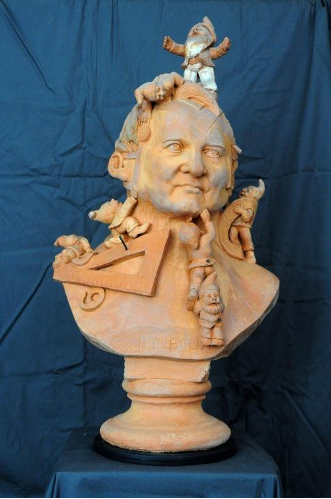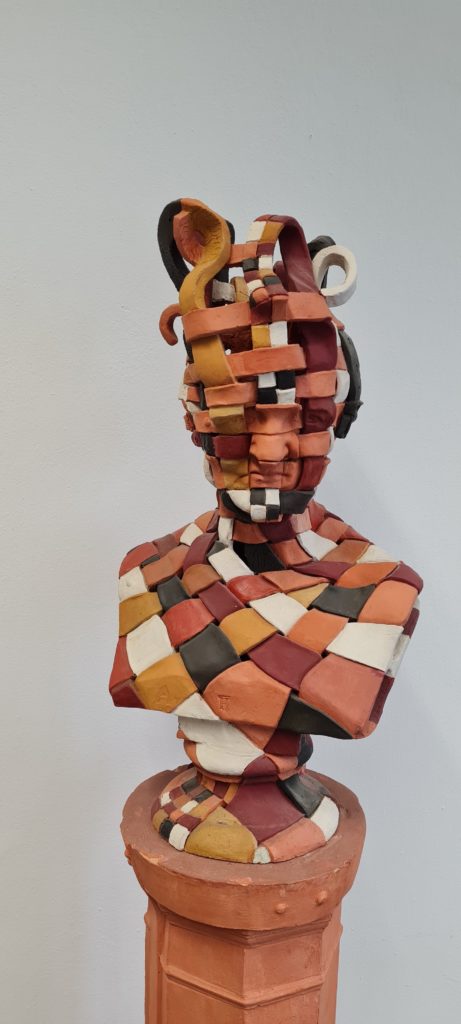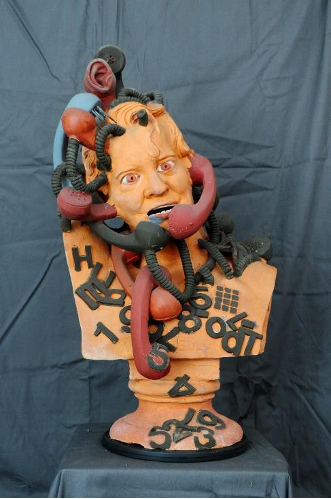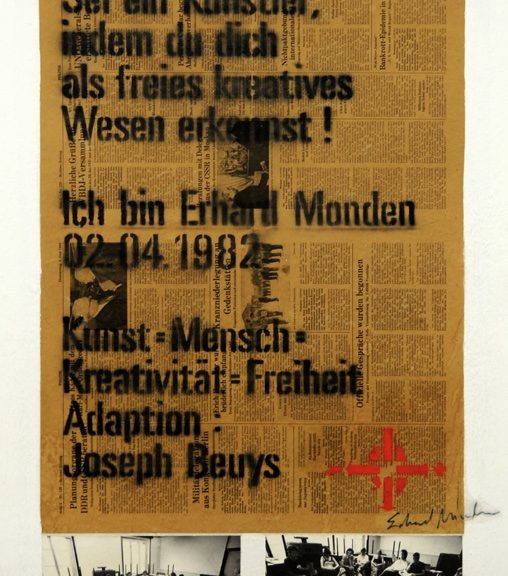Object of the Month 12/2025
Many venerable universities have a picture gallery of professors or rectors. Berlin’s Friedrich-Wilhelm-Universität and Humboldt-Universität can also look back on a long line of rectors (later presidents). However, their pictorial representation (in contrast to the busts of scholars) only became established in the 1980s. In preparation for the university’s jubilee in 1985, Heinz Wagner’s portraits of Johann Gottlieb Fichte and Johannes Stroux set a clear tone: The first rector of the Berlin University in 1811/12 and the first rector after its reopening in 1946/47 were to represent the new self-image of Humboldt-Universität in the spirit of establishing tradition, leaving out both the National Socialist and late bourgeois past. The following rectors were also to be painted for the Senate Hall – only Hermann Dersch was removed from the list of proposals, as the lawyer had moved to the University of Cologne in the West in 1951.
In accordance with this selection, the design of the portraits was also politically approved. At first glance, the portraits appear quite different: some seated, some standing, with and without attributes, in action or at rest, almost all rectors wear the chain of office, but none wear a gown. The portrait of Karl-Heinz Wirzberger, whose term of office ran from 1967 to 1976, is an example of this being a deliberate choice.
Originally, Wirzberger’s portrait was to be painted by the well-known Leipzig painter Werner Tübke. In keeping with his working method – he often relied on historical references, both thematically and pictorially – he wanted to depict the rector in his academic gown. However, the request to borrow the regalia from the Traditionskabinett (Tradition Cabinet) was denied by the Cultural Commission of the SED-Kreisleitung (District Leadership) and the University History Research Centre. The reasoning cited not only the abandonment of gowns following the third university reform in 1968, but also the need to avoid misunderstandings that could have negative publicity. Otherwise, given the differences of opinion that still exist today about the decisions made at that time, the portrayal could lead to interpretations that are not in line with the measures taken at the time (HU, Custody, letter from Walter Mohrmann to Rector Helmut Klein, 14 December 1982 (carbon copy)). This was also stipulated for the other portraits. In particular, the brushwork of most of the portraits – such as those of Walter Friedrich by Heinrich Tessmer (1984), Werner Hartke by Arno Rink (1987) and Kurt Erich Schröder by Walter Womacka (1985) – as well as the framing and positioning of the subjects make the series of rectors appear lively and individual.
However, it is not immediately apparent that the English scholar Wirzberger is depicted as a rector. The portrait appears to be a vivid snapshot: Wirzberger, wearing a dark suit and tie, looks up from his work at the viewer, the document he has just been working on still in his hands and ready to be placed on the pile of completed documents. The desk at which he sits separates him from the viewer’s space and at the same time forms a spatial unity with the background. With this industrious pose, the portrait stands out from the other, much more representative rector portraits of the 1980s.
Even after the end of the GDR, the portrait series continued – now with portraits of university presidents, whereby the subjects themselves were allowed to choose an artist and the manner of their representation. Marlis Dürkop-Leptihn was the first woman to hold this office, and the sociologist chose a woman artist to paint her portrait (2006). With Ruth Tesmar, long-time professor of artistic-aesthetic practice at the HU and director of the Menzel-Dach, a change in media also took place – collage with photos and writing on glass as the image support replaced the classic oil painting and conveyed a versatile personality and a multi-layered office.
Sabine Curio, on the other hand, takes us into the private sphere with her portrait of Jürgen Mlynek (2009). The physicist and rector from 2000 to 2005 stands at a desk in front of a patio door with a view of greenery. Mlynek, seen in profile, is engrossed in writing or editing a text and does not notice the viewer, giving the impression of a glimpse into his private working environment. The diversity of media continues with the photographs by Herlinde Koelbl, which the last presidents, Christoph Markschies (in black and white) and Sabine Kunst (in colour), chose for their portraits.
Even though the collection of portraits of rectors and presidents is not extensive, it nevertheless conveys the image of a vibrant university history with a promising future.
Author: Christina Kuhli










